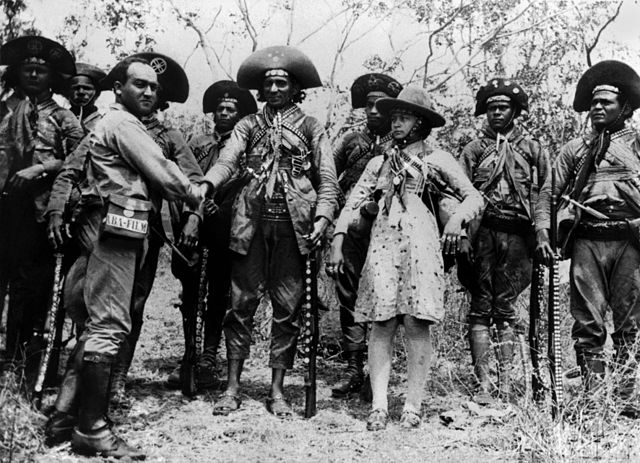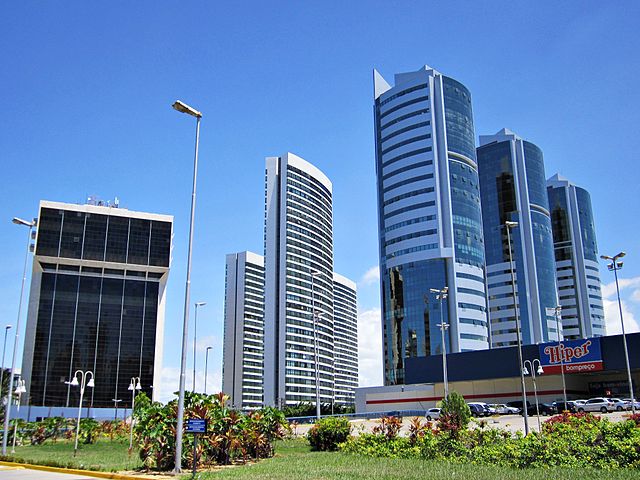Cangaço was a phenomenon of Northeast Brazil in the late 19th and early 20th centuries. This region of Brazil is known for its aridness and hard way of life, and in a form of "social banditry" against the government, many men and women decided to become nomadic bandits, roaming the hinterlands seeking money, food, and revenge.
Lampião and his companions with cinematographer Benjamin Abrahão Botto
Lampião's band, plus 4 prisoners (taken to extort ransoms), photographed in Limoeiro soon after their attack on the town of Mossoró in 1927. 28 bandits are shown in the photo, but the band numbered around 60 men at the time
Cangaceiro Corisco in 1936
Cangaceiro costume at Museu Cais do Sertão, Recife
The Northeast Region of Brazil is one of the five official and political regions of the country according to the Brazilian Institute of Geography and Statistics. Of Brazil's twenty-six states, it comprises nine: Maranhão, Piauí, Ceará, Rio Grande do Norte, Paraíba, Pernambuco, Alagoas, Sergipe and Bahia, along with the Fernando de Noronha archipelago.
View of a sugar-producing farm (engenho) in colonial Pernambuco by Dutch painter Frans Post (17th century).
The Historic centre of Salvador, Bahia, was declared a UNESCO World Heritage Site in 1985.
Recife is the largest metropolitan area of the Northeast Region, and the third largest city of the region.
Coconut trees in Pernambuco








